South Korea's new president wants to end a 74-year tradition and move out of the presidential home. Take a look at the Blue House, which is 3 times the size of the White House.
Amanda Goh

- The Blue House has been the official residence and office of South Korea's president for 74 years.
- Breaking with tradition, President Yoon Suk-yeol wants to move his office to Yongsan instead.
South Korea's Blue House, or Cheong Wa Dae, has served as the president's official residence and office since the government was established in 1948.
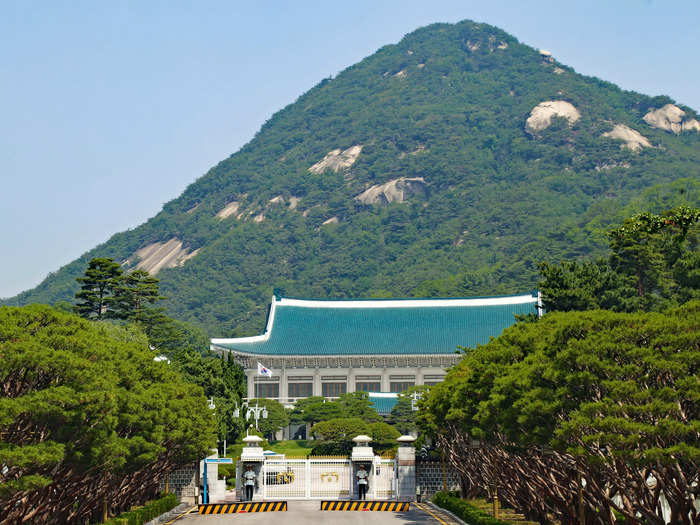
Built in 1991 on the gardens of former royal palace Gyeongbokgung, South Korea's Blue House gets its name from its distinctive roof, which is made of 150,000 handmade blue tiles. Across extensive renovations over the past 74 years, the color of the roof has remained the same.
The house has served as the office of each South Korean president since 1948, but that's about to change. Newly elected South Korean President Yoon Suk-yeol, who won the March 9 election, officially announced on March 20 that he would move the presidential office to a defense ministry compound in Yongsan upon his inauguration.
Yoon said his decision was motivated by his desire to be a people-first president.
"We are looking to move out of the Blue House, which had been a symbol of absolute power in our history, and return that power to the people," Yoon's spokeswoman Kim Eun-hye said in a briefing on March 18, per Reuters.
Yoon's team did not immediately respond to Insider's request for comment.
South Korea's traditional architectural style, characterized by sloping roofs, is reflected in the Blue House's design.
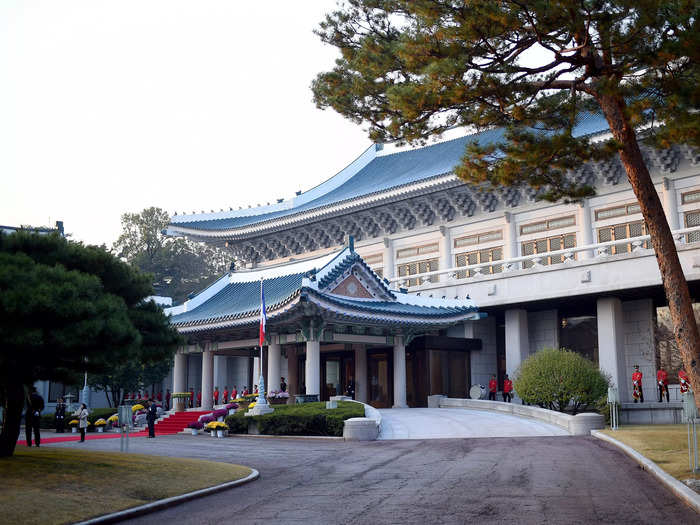
South Koreans view the Blue House as a symbol of "unchecked power," Yonsei University sociology professor Kim Dong-no told The Wall Street Journal.
Yoon's political opponents have accused him of listening to the readings of Fengshui practitioners and prioritizing their advice over national security.
Fengshui practitioners consider the location of the Blue House to be inauspicious due to the misfortunes of past presidents, Reuters reported. In South Korea's 25-year democratic history, four out of six presidents have either been jailed or died from suicide after leaving office.
"People suspect that the move was motivated by shamans' advice that the location of the Blue House is cursed," Democratic Party politician Cho Jeong-sik told the South China Morning Post.
In a briefing, the outgoing Moon administration said they felt the rushed relocation efforts could "create a security vacuum and confusion" amidst rising tensions with the North, per Reuters.
The relocation to a Yongsan defense military compound will cost an estimated 49.6 billion won ($40.1 million), according to figures provided by South Korea's Ministry of Economy and Finance in a press conference, per Reuters.
Although the Blue House is heavily guarded and securely positioned in front of mountains, North Korean military forces attempted to breach the grounds in 1968.
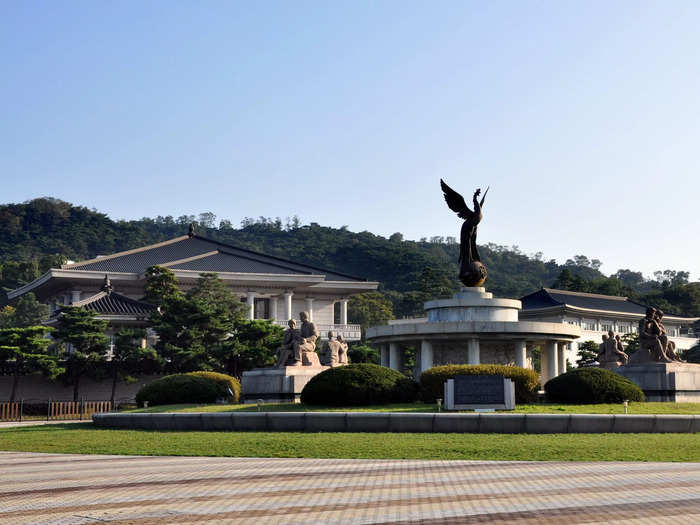
Known as "The Blue House Raid," North Korea sent 31 military commandos to assassinate then-South Korean President Park Chung-he in 1968. The attempt was unsuccessful, and almost all of the soldiers were either killed or committed suicide.
Of the two remaining attackers, one managed to return to North Korea, and the other, Kim Shin-jo, was captured by the South. Kim received a pardon and became a South Korean citizen.
In 2018, Kim recounted the details of the mission to NBC. He said the soldiers were disguised as South Korean civilians and managed to get within 350 yards of the Blue House before being discovered.
The Blue House spans 62 acres and is more than three times the size of the White House.
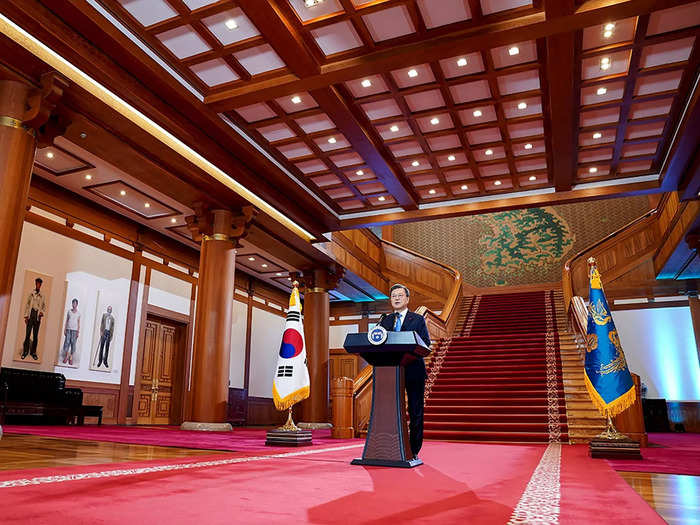
Among the Blue House's rooms are a main office building, a presidential residence, a state reception house, and a press hall.
It has always been the designated location where the president makes official announcements. It's also where state meetings, press conferences, and special ceremonies are held.
South Korean citizens also often stage demonstrations at the grounds outside the Blue House.
In April 2015, thousands of people marched towards the Blue House in protest against the government's poor rescue response during the Sewol ferry tragedy.
South Korean citizens staged a similar demonstration near the Blue House in November 2016, calling for then-president Park Geun-hye's resignation after a corruption scandal. Park was eventually impeached in 2017 and served almost five years in prison before she was pardoned in December 2021.
Numerous US presidents have visited the Blue House on state visits, including former presidents Barack Obama and Donald Trump.

The Blue House has also hosted other important officials, including Chinese President Xi Jinping, former US Secretary of State John Kerry, and Pope Francis.
Apart from the main buildings, the Blue House also has a pond and an extensive garden.
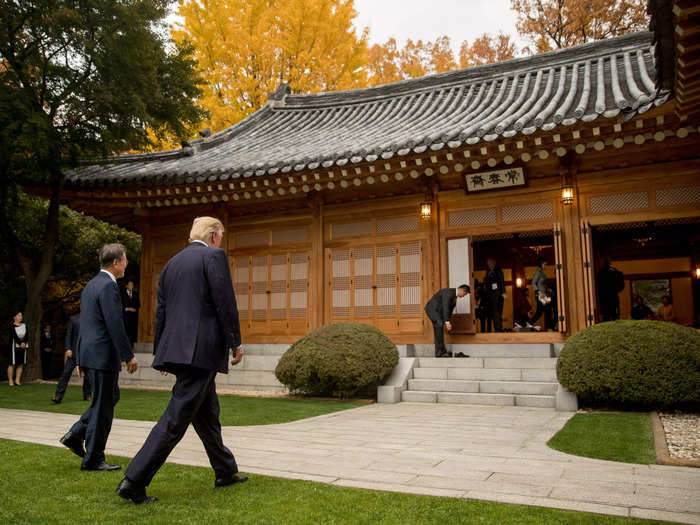
Visitors are allowed in certain areas of the Blue House, but only through guided tours.
However, there are plans to reform the visitor policy under President Yoon Suk-yeol's administration, per Korea JoongAng Daily. Visitors will now be allowed to roam freely around permitted areas without a guide.
With this change in policy, the Blue House is expected to welcome up to 39,000 people a day, an increase from the 1,500 visitors that the guided tours currently handle.
READ MORE ARTICLES ON
Popular Right Now
Popular Keywords
Advertisement